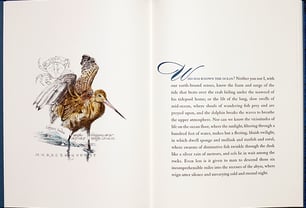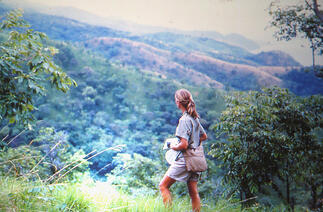History is packed with examples of powerful women who've made names for themselves in the fields of science and technology. Think Jane Goodall. Mae Jemison. Barbara McClintock. Rachel Carson. Each of these ladies has had a significant and lasting impact. So, we wondered, is there something these women in science had in common? What led to their success?
An exploration of these women scientists reveals that, yes, they have much in common beyond just their focus on the scientific realm. Certain characteristics stick out and taking them into consideration can benefit us all, in whatever passion we are pursuing. So without further ado, let’s delve in to some of the things that helped make these women so great.
Hard Working and Humble
 The women scientists listed above didn’t actively seek the spotlight. Quite the opposite. They put their heads down, did the work, recorded the results, and their dedication and findings spoke for themselves. In effect, these women weren’t in it for the fame. Take Rachel Carson, for example. She started out her career with well-written essays on science and sea life in The Atlantic Monthly. Jane Goodall for her part took the unglamorous job of studying chimps in their natural environment. And geneticist Barbara McClintock just kept on working, even when her findings were not being accepted by her peers. Eventually, these women saw their work come to mean much more to the scientific community as a whole. But all of them did their work for its own sake rather than in pursuit of some sort of fame and fortune.
The women scientists listed above didn’t actively seek the spotlight. Quite the opposite. They put their heads down, did the work, recorded the results, and their dedication and findings spoke for themselves. In effect, these women weren’t in it for the fame. Take Rachel Carson, for example. She started out her career with well-written essays on science and sea life in The Atlantic Monthly. Jane Goodall for her part took the unglamorous job of studying chimps in their natural environment. And geneticist Barbara McClintock just kept on working, even when her findings were not being accepted by her peers. Eventually, these women saw their work come to mean much more to the scientific community as a whole. But all of them did their work for its own sake rather than in pursuit of some sort of fame and fortune.Innovative
What’s more, the work these women did was ground breaking. They were not afraid to think outside the box. Perhaps that seems obvious; it is, after all, why we herald them as models of women who were smashingly successful scientists. But consider this. Their work was new and not always popular. They showed a great deal of integrity in choosing truth over popularity. Carson wrote a revolutionary work, Silent Spring, in which she relayed her findings on the effects of overuse of environmental pesticides, especially DDT. It clearly was an unpopular topic. The pesticide industry was furious. The New York Times published articles in which Carson was described as a “quiet woman author” who was fast becoming noisy in her efforts. And Barbara McClintock, who studied controlling elements and the regulation of genes, was so innovative that her work wasn’t even recognized until years later when other studies corroborated her findings.Confident
Catalysts for change
All of these women scientists are inspiring for the work they did and the change they brought about. Carson’s work led to the creation of the Environmental Protection Agency, and a huge shift in conservation efforts world-wide. Goodall’s research revealed findings about chimps that we had before assumed to be impossible. McClintock’s findings were eventually used in the studies of plant biology as well as evolution and genome change. And Jemison has inspired a new generation of African American girls to dream big.Writers
Fortunately for us, these woman scientists wrote it all down. Acquiring books by science-minded women would make for a fascinating collection. After all, whether like Rachel Carson, they were writers first with a science focus, or like Mae Jamison, they wrote autobiographies telling their tales for future dreamers, we can be thankful that these women recorded their findings, their experiences, and their lives for the rest of us to learn from.










